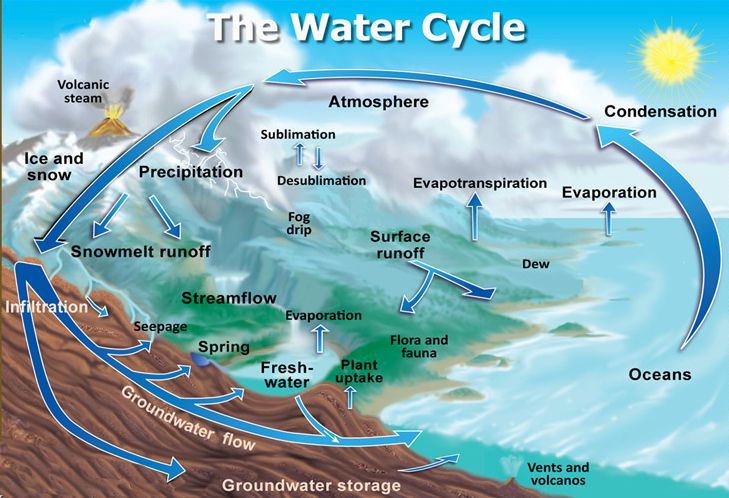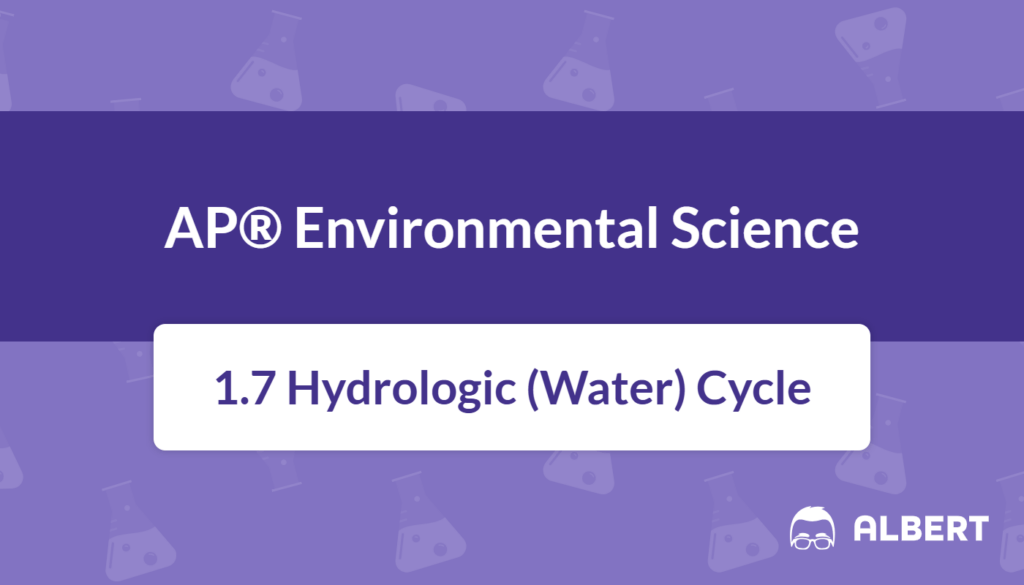What We Review
Introduction
The hydrologic cycle steps, sometimes called the water cycle, are one of the most crucial processes on Earth. It involves the continuous movement of water across the planet, transforming from solid ice to liquid water and then into water vapor. This cycle is essential to many areas of environmental science because it determines how water is stored, transferred, and recycled among land, oceans, and the atmosphere.
Environmental scientists often connect the hydrologic cycle to broader topics such as the carbon cycle and population growth models. For example, human activities that tap into groundwater or adjust the flow in rivers can alter local and global water availability. Therefore, understanding how water cycles through the environment is key to resource management and conservation efforts. Indeed, knowledge of the hydrologic cycle forms a bedrock for strategies that involve renewable energy and ecosystem health as well.
What Is the Hydrologic Cycle?
The hydrologic cycle is the process by which water moves through its solid, liquid, and gaseous phases between various reservoirs, known as sources and sinks. This movement encompasses everything from a tiny droplet evaporating from a leaf to an iceberg melting into the ocean. Although the cycle can appear complicated, it can be understood by focusing on how water changes states and circulates among Earth’s systems.
The cycle is driven primarily by solar energy. When sunlight heats water in oceans, lakes, or soil, that water can become water vapor. In other words, the Sun provides the power that lifts water from Earth’s surface into the atmosphere. Next, the water vapor eventually condenses and may fall back to Earth as precipitation. Over time, water can collect in different reservoirs, such as oceans, ice caps, and groundwater basins.
Key Components of the Hydrologic Cycle
Water is unique because it exists in all three major phases—solid, liquid, and gas—on Earth’s surface. Therefore, each phase transition is significant in the hydrologic cycle. These transformations include:
- Ice (solid) melting to form liquid water
- Liquid water evaporating to form water vapor (gas)
- Water vapor condensing back into a liquid or solid
Many environmental factors, including temperature and pressure, influence these changes. Moreover, scientists frequently refer to water’s storage areas as reservoirs. A reservoir is simply a place where water is held for varying lengths of time. Oceans, ice caps, groundwater, and even the atmosphere serve as reservoirs.
In ecology and environmental science, these reservoirs serve as both sources (where water originates) and sinks (where water eventually accumulates). Because the movement of water impacts plant growth, soil moisture, and habitat conditions, environmental scientists must comprehend the hydrologic cycle to evaluate factors like agriculture, forestry, and climate.
The Hydrologic Cycle Steps
The hydrologic cycle consists of several distinct steps, each involving the transformation or movement of water. Although water molecules can enter the cycle at different points, the overarching process remains consistent. The major steps are:

Evaporation
Evaporation is the process by which liquid water changes into water vapor. Oceans, lakes, rivers, and soil surfaces are primary locations for evaporation. Solar energy warms the surface water, causing the water molecules to gain sufficient energy to escape into the atmosphere. The rate of evaporation depends on temperature, wind speed, and humidity. When temperatures rise or winds increase, evaporation tends to occur more quickly.
Transpiration
Plants also contribute to water vapor in the atmosphere through transpiration. In this process, plants absorb water from the soil through their roots, transport it internally, and release water vapor through pores in their leaves. Together, evaporation and transpiration are sometimes combined into one term: evapotranspiration. Environmental scientists track evapotranspiration because it influences local climate and water availability for agricultural use.
Condensation
As moist air rises and cools, water vapor condenses into tiny droplets or ice crystals. These droplets form clouds, which can be observed at various altitudes. Condensation in the atmosphere requires particles around which the droplets can form, such as dust or pollen. When enough droplets collect, visible clouds or fog appear. This step is critical because it transitions water vapor back into a liquid or solid phase before precipitation can occur.
Precipitation
When cloud droplets grow heavy enough, gravity pulls them down in the form of rain, snow, sleet, or hail. Precipitation replenishes the Earth’s water supply on land surfaces. However, not all precipitation reaches the ground; some evaporates on the way down, particularly in dry regions. Nonetheless, precipitation is vital for maintaining ecosystems, filling reservoirs, and supporting agriculture.
Infiltration
Once water reaches the ground, it may soak into the soil through infiltration. The rate of infiltration depends on factors such as soil type, vegetation, and land slope. Porous soils with substantial plant coverage generally allow more water to infiltrate. This infiltrated water can then replenish groundwater systems, making it a critical part of the water cycle for drinking water supplies and ecosystem stability.
Runoff
Water that does not infiltrate into the soil becomes runoff, flowing across land surfaces into streams, rivers, and eventually oceans. Runoff can shape landscapes through erosion, and it can transport nutrients (or pollutants, if present) across large distances. Therefore, understanding runoff is important for managing watersheds and maintaining clean water resources.
Example: A Step-by-Step Progression
- Imagine a water droplet resting in a sunlit puddle after a rainstorm.
- The Sun warms this puddle, and the droplet evaporates, joining the atmosphere as water vapor.
- Rising into cooler layers of air, the vapor condenses to form part of a cloud.
- The cloud travels, and under the right conditions, releases precipitation in the form of rain.
- The droplet falls to Earth’s surface and seeps into the soil through infiltration.
- After some time, it may percolate deeper into groundwater, or later emerge in a nearby stream as runoff.
- Ultimately, that same droplet might return to the ocean, completing one cycle and preparing for the next.
Major Reservoirs of Water
Oceans hold the majority of water on Earth. In fact, they make up the main reservoir in the hydrologic cycle. Although ocean water is too salty for direct human consumption, it is nonetheless essential for weather patterns and global climate. Additionally, ice caps—largely found in polar regions—are much smaller reservoirs compared to the oceans, yet they store the majority of Earth’s freshwater in a frozen state.
Groundwater is another smaller but significant reservoir. This water, stored beneath the Earth’s surface in aquifers, can be tapped for drinking, irrigation, and industrial uses. However, overuse of groundwater threatens its availability. Other smaller reservoirs include lakes, rivers, wetlands, and the atmosphere itself. Despite occupying less volume, these smaller reservoirs play critical roles in supporting ecosystems, agriculture, and local water supplies.
Interactions Between Reservoirs
All these reservoirs interact through the hydrologic cycle’s steps. Water can shift from ice caps into rivers if it melts; it can move from the ocean into the atmosphere through evaporation, and it can transfer back to the ocean through precipitation and runoff. These movements matter for climate systems because they regulate temperature and distribute heat across the globe.
Furthermore, water availability in one reservoir can affect human uses and ecological balance in another. For instance, when heavy runoff carries too many nutrients into lakes, algal blooms may result. This in turn impacts local ecosystems that rely on clean water. Therefore, managing water resources involves understanding transitions between reservoirs.
Real-World Applications and Implications
In environmental science, the hydrologic cycle directly connects to weather and climate. In particular, the distribution of rainfall shapes plant growth and biodiversity. Moreover, the cycle influences renewable energy sources, such as hydroelectric power, which relies on flowing water.
By studying patterns of evaporation, precipitation, and runoff, scientists can make better climate predictions. This knowledge helps officials plan for droughts or floods, which in turn affects agriculture, drinking water supplies, and even energy production. Meanwhile, issues like climate change can alter snowfall patterns and raise sea levels, affecting how water is stored and delivered throughout the planet, as well as the hydrologic cycle steps.
Because water drives so many environmental and societal processes, changes to one part of the hydrologic cycle can have widespread consequences. Therefore, communities and governments collaborate with scientists to protect sources of freshwater and ensure that ecosystems remain intact.
Conclusion
The hydrologic cycle is an essential concept in AP®. It shows how water, powered by solar energy, moves between different states—solid, liquid, and gas—and among various reservoirs, including oceans, ice caps, and groundwater. Each of the hydrologic cycle steps—from evaporation and transpiration to condensation, precipitation, infiltration, and runoff—plays a vital role in sustaining life on Earth. Furthermore, these processes influence global climate, local weather patterns, and water supplies.
Understanding the hydrologic cycle allows environmental scientists and policymakers to make informed decisions regarding water use, protection of aquatic habitats, and climate change response. By connecting hydrologic concepts to real-world problems, individuals can better appreciate why water is considered one of Earth’s most valuable resources.
Important Vocabulary
- Hydrologic Cycle: The continuous movement of water in its solid, liquid, and gaseous forms between different reservoirs on Earth.
- Transpiration: The process by which water vapor exits a plant’s leaves, contributing to atmospheric moisture.
- Reservoir: A natural or artificial place where water is stored, such as oceans, ice caps, or underground aquifers.
- Infiltration: The process by which water soaks into the ground, replenishing soil moisture and groundwater.
- Runoff: Water that flows over the land surface into streams, rivers, and eventually the ocean.
Sharpen Your Skills for AP® Environmental Science
Are you preparing for the AP® Environmental Science test? We’ve got you covered! Try our review articles designed to help you confidently tackle real-world AP® Environmental Science problems. You’ll find everything you need to succeed, from quick tips to detailed strategies. Start exploring now!
- AP® Environmental Science: 1.3 Review
- AP® Environmental Science: 1.4 Review
- AP® Environmental Science: 1.5 Review
- AP® Environmental Science: 1.6 Review
Need help preparing for your AP® Environmental Science exam?
Albert has hundreds of AP® Environmental Science practice questions, free response, and full-length practice tests to try out.








